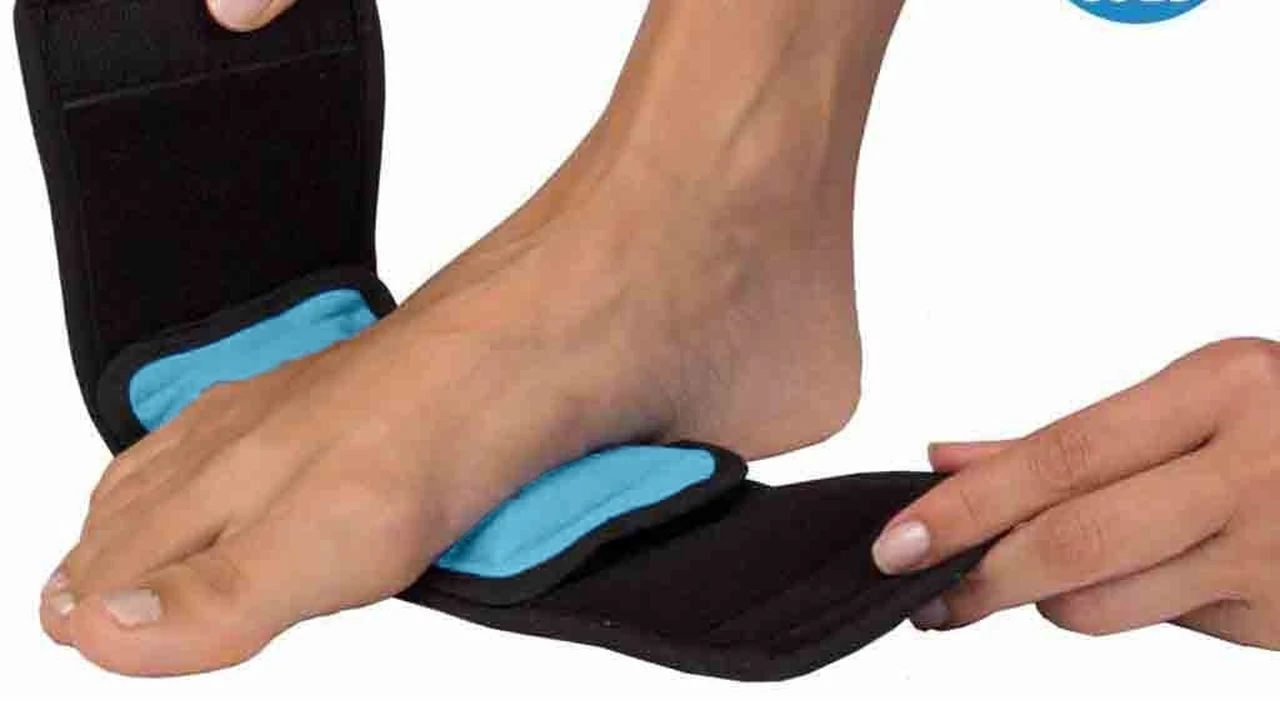Best Ice Packs for Elbow and Wrist Injuries

Understanding Elbow and Wrist Injuries and the Role of Ice Packs
Elbow and wrist injuries are incredibly common, affecting athletes, office workers, and pretty much anyone who uses their arms and hands regularly. From carpal tunnel syndrome to tennis elbow, these conditions can cause significant pain and discomfort, impacting daily life. But what exactly are we talking about when we say "elbow and wrist injuries," and why are ice packs such a crucial part of recovery?
Let's break it down. Common elbow injuries include:
- Tennis Elbow (Lateral Epicondylitis): Pain on the outside of the elbow, often caused by overuse of the forearm muscles. Despite the name, you don't have to play tennis to get it!
- Golfer's Elbow (Medial Epicondylitis): Pain on the inside of the elbow, similar to tennis elbow but affecting different tendons.
- Cubital Tunnel Syndrome: Compression of the ulnar nerve (the "funny bone" nerve) in the elbow, leading to numbness and tingling in the fingers.
- Elbow Bursitis (Olecranon Bursitis): Inflammation of the bursa (a fluid-filled sac) at the tip of the elbow, causing swelling and pain.
- Elbow Sprains: Ligament injuries caused by sudden twists or impacts.
And common wrist injuries include:
- Carpal Tunnel Syndrome: Compression of the median nerve in the wrist, leading to numbness, tingling, and pain in the hand and fingers.
- Wrist Sprains: Ligament injuries caused by falls or sudden impacts.
- De Quervain's Tenosynovitis: Inflammation of the tendons on the thumb side of the wrist, causing pain and difficulty moving the thumb.
- Scaphoid Fracture: A break in the scaphoid bone, one of the small bones in the wrist, often caused by a fall onto an outstretched hand.
- Ganglion Cysts: Fluid-filled lumps that develop on the wrist or hand, often painless but can sometimes cause discomfort.
So, where do ice packs come in? Ice packs are a cornerstone of RICE therapy (Rest, Ice, Compression, Elevation), which is often the first line of defense for acute injuries. Applying ice to an injured area helps to:
- Reduce Inflammation: Ice constricts blood vessels, decreasing blood flow to the area and minimizing inflammation.
- Relieve Pain: Ice numbs the nerves, providing temporary pain relief.
- Prevent Further Damage: By reducing inflammation and pain, ice can help prevent further damage to the injured tissues.
While ice packs are beneficial, it's crucial to use them correctly. Never apply ice directly to the skin, as this can cause frostbite. Always wrap the ice pack in a towel or cloth. Apply ice for 15-20 minutes at a time, several times a day, especially in the first few days after an injury. If pain persists or worsens, consult a doctor or physical therapist.
Choosing the Right Ice Pack for Your Elbow or Wrist
Not all ice packs are created equal. The best ice pack for your elbow or wrist injury will depend on several factors, including the location and severity of the injury, your personal preferences, and your budget. Let's explore some of the key considerations when choosing an ice pack:
- Type of Ice Pack: There are several different types of ice packs available, each with its own pros and cons. These include gel packs, ice bags, cold compresses, and instant ice packs.
- Size and Shape: The ice pack should be the right size and shape to effectively cover the injured area. For elbow injuries, you might want a larger, more flexible ice pack that can wrap around the joint. For wrist injuries, a smaller, more contoured ice pack might be more appropriate.
- Durability: Choose an ice pack that is made from durable materials and can withstand repeated use.
- Reusable vs. Disposable: Reusable ice packs are generally more cost-effective in the long run, but disposable ice packs can be convenient for travel or emergencies.
- Ease of Use: The ice pack should be easy to use and apply. Some ice packs require freezing, while others are ready to use right out of the package.
- Price: Ice packs range in price from a few dollars to over $50. Consider your budget and how often you plan to use the ice pack when making your decision.
Considering these factors will help you narrow down your options and choose the best ice pack for your specific needs.
Top Ice Pack Recommendations for Elbow Injuries
When dealing with elbow pain, finding the right ice pack can make a world of difference. Here are a few top recommendations, considering different needs and budgets:
Vive Gel Ice Pack Wrap - Elbow
Description: The Vive Gel Ice Pack Wrap is specifically designed for elbow injuries. It features a flexible gel pack that conforms to the shape of the elbow and a comfortable neoprene wrap that provides compression and support.
Use Cases: This ice pack is ideal for tennis elbow, golfer's elbow, elbow bursitis, and elbow sprains. It can also be used for post-surgery recovery.
Pros:
- Specifically designed for elbow injuries
- Flexible gel pack conforms to the shape of the elbow
- Provides compression and support
- Reusable and durable
Cons:
- May be too bulky for some users
- The neoprene wrap can get warm after prolonged use
Pricing: Around $25-$30
Mueller Reusable Cold/Hot Pack
Description: The Mueller Reusable Cold/Hot Pack is a versatile option that can be used for both cold and hot therapy. It's a simple, durable gel pack that can be easily frozen or microwaved.
Use Cases: This ice pack is suitable for a variety of elbow injuries, including tennis elbow, golfer's elbow, and elbow sprains. It can also be used for general pain relief.
Pros:
- Versatile and can be used for both cold and hot therapy
- Durable and reusable
- Affordable
Cons:
- Does not come with a wrap, so you'll need to use a towel or cloth
- May not conform to the shape of the elbow as well as a wrap-style ice pack
Pricing: Around $10-$15
TheraPearl Elbow/Knee Wrap
Description: The TheraPearl Elbow/Knee Wrap is a unique ice pack that uses Pearl Technology to deliver flexible and consistent cold therapy. The pearls conform to the shape of the elbow and provide even coverage.
Use Cases: This ice pack is ideal for tennis elbow, golfer's elbow, elbow bursitis, and post-surgery recovery. It can also be used for knee injuries.
Pros:
- Pearl Technology provides flexible and consistent cold therapy
- Conforms to the shape of the elbow
- Reusable and durable
Cons:
- Can be a bit bulky
- May not stay cold as long as some other ice packs
Pricing: Around $20-$25
Top Ice Pack Recommendations for Wrist Injuries
Wrist injuries require a different approach when it comes to ice packs. Here are some top recommendations specifically designed for wrist pain and discomfort:
ARCTIC FLEX Reusable Ice Pack Wrap for Wrist
Description: The ARCTIC FLEX Reusable Ice Pack Wrap is designed specifically for wrist injuries. It features a flexible gel pack and adjustable straps for a comfortable and secure fit.
Use Cases: This ice pack is ideal for carpal tunnel syndrome, wrist sprains, De Quervain's tenosynovitis, and post-surgery recovery.
Pros:
- Specifically designed for wrist injuries
- Flexible gel pack conforms to the shape of the wrist
- Adjustable straps provide a secure fit
- Reusable and durable
Cons:
- May be too small for some users
- The straps can sometimes be difficult to adjust
Pricing: Around $20-$25
Coldest Ice Pack Small - Reusable Gel Ice Pack
Description: The Coldest Ice Pack Small is a versatile and durable ice pack that can be used for a variety of injuries. Its small size makes it ideal for wrist injuries.
Use Cases: This ice pack is suitable for carpal tunnel syndrome, wrist sprains, De Quervain's tenosynovitis, and general pain relief.
Pros:
- Versatile and can be used for various injuries
- Durable and reusable
- Stays cold for a long time
Cons:
- Does not come with a wrap, so you'll need to use a towel or cloth
- May not conform to the shape of the wrist as well as a wrap-style ice pack
Pricing: Around $15-$20
Natracure Cold Therapy Wrap for Wrist
Description: The Natracure Cold Therapy Wrap for Wrist is a comfortable and convenient ice pack that provides targeted cold therapy for the wrist. It features a soft, plush lining and adjustable straps for a secure fit.
Use Cases: This ice pack is ideal for carpal tunnel syndrome, wrist sprains, De Quervain's tenosynovitis, and post-surgery recovery.
Pros:
- Comfortable and convenient
- Soft, plush lining
- Adjustable straps provide a secure fit
- Reusable and durable
Cons:
- May not stay cold as long as some other ice packs
- Can be a bit bulky
Pricing: Around $25-$30
Ice Pack Comparison for Elbow and Wrist Injuries
To help you make a more informed decision, let's compare the features, pros, and cons of the ice packs we've discussed:
| Ice Pack | Type | Elbow Specific | Wrist Specific | Pros | Cons | Price Range |
|---|---|---|---|---|---|---|
| Vive Gel Ice Pack Wrap - Elbow | Gel Pack Wrap | Yes | No | Specifically designed for elbow, provides compression and support, reusable and durable. | May be bulky, neoprene wrap can get warm. | $25-$30 |
| Mueller Reusable Cold/Hot Pack | Gel Pack | Yes | Yes | Versatile, durable, affordable. | No wrap included, may not conform well. | $10-$15 |
| TheraPearl Elbow/Knee Wrap | Pearl Technology Wrap | Yes | No | Flexible and consistent cold therapy, conforms to shape. | Can be bulky, may not stay cold as long. | $20-$25 |
| ARCTIC FLEX Reusable Ice Pack Wrap for Wrist | Gel Pack Wrap | No | Yes | Specifically designed for wrist, adjustable straps, reusable and durable. | May be too small for some, straps can be difficult to adjust. | $20-$25 |
| Coldest Ice Pack Small - Reusable Gel Ice Pack | Gel Pack | Yes | Yes | Versatile, durable, stays cold for a long time. | No wrap included, may not conform well. | $15-$20 |
| Natracure Cold Therapy Wrap for Wrist | Gel Pack Wrap | No | Yes | Comfortable, convenient, soft lining, adjustable straps. | May not stay cold as long, can be bulky. | $25-$30 |
This table provides a quick overview of the key differences between the ice packs, allowing you to easily compare their features and determine which one best suits your needs.
Detailed Information on Ice Pack Types and Their Uses
Let's delve deeper into the different types of ice packs available and how they can be used effectively for elbow and wrist injuries:
Gel Packs
Gel packs are one of the most common types of ice packs. They contain a gel-like substance that stays cold for a relatively long time. They are reusable and can be easily frozen and reused. Gel packs are generally flexible and can conform to the shape of the injured area, making them a good choice for both elbow and wrist injuries.
Uses:
- Tennis elbow
- Golfer's elbow
- Elbow sprains
- Carpal tunnel syndrome
- Wrist sprains
- De Quervain's tenosynovitis
Pros:
- Reusable
- Flexible
- Long-lasting cold
- Affordable
Cons:
- Can be bulky
- May not stay cold as long as some other types of ice packs
Ice Bags
Ice bags are simple bags that can be filled with ice. They are a classic and inexpensive option for cold therapy. Ice bags can be easily molded to the shape of the injured area, providing targeted relief.
Uses:
- Tennis elbow
- Golfer's elbow
- Elbow sprains
- Carpal tunnel syndrome
- Wrist sprains
- De Quervain's tenosynovitis
Pros:
- Inexpensive
- Easy to use
- Can be molded to the shape of the injured area
Cons:
- Melting ice can be messy
- May not stay cold as long as some other types of ice packs
Cold Compresses
Cold compresses are reusable wraps that contain a gel or liquid that stays cold. They are designed to provide compression and support to the injured area, in addition to cold therapy.
Uses:
- Tennis elbow
- Golfer's elbow
- Elbow sprains
- Carpal tunnel syndrome
- Wrist sprains
- De Quervain's tenosynovitis
Pros:
- Provides compression and support
- Reusable
- Easy to use
Cons:
- Can be bulky
- May not stay cold as long as some other types of ice packs
Instant Ice Packs
Instant ice packs are single-use ice packs that contain chemicals that create a cooling reaction when mixed. They are convenient for travel or emergencies when you don't have access to a freezer.
Uses:
- Tennis elbow
- Golfer's elbow
- Elbow sprains
- Carpal tunnel syndrome
- Wrist sprains
- De Quervain's tenosynovitis
Pros:
- Convenient for travel or emergencies
- No freezer required
Cons:
- Single-use only
- Can be expensive
- May not stay cold for very long
How to Use Ice Packs Effectively for Optimal Healing
Using ice packs correctly is crucial for maximizing their benefits and promoting healing. Here are some tips on how to use ice packs effectively:
- Protect Your Skin: Always wrap the ice pack in a towel or cloth to protect your skin from frostbite.
- Apply for 15-20 Minutes: Apply ice for 15-20 minutes at a time, several times a day, especially in the first few days after an injury.
- Elevate the Injured Area: Elevate the injured area while applying ice to help reduce swelling.
- Combine with Compression: Use a compression wrap in conjunction with ice to further reduce swelling and provide support.
- Listen to Your Body: If you experience any pain, numbness, or tingling, stop using the ice pack immediately.
- Don't Use on Open Wounds: Avoid applying ice to open wounds or areas with poor circulation.
- Consult a Doctor: If pain persists or worsens, consult a doctor or physical therapist.
Beyond Ice Packs: Other Treatments for Elbow and Wrist Injuries
While ice packs are a valuable tool for managing elbow and wrist injuries, they are often most effective when combined with other treatments. Here are some additional therapies that can help promote healing and reduce pain:
- Rest: Avoid activities that aggravate your injury and allow your body to heal.
- Compression: Use a compression wrap to help reduce swelling and provide support.
- Elevation: Elevate the injured area to help reduce swelling.
- Pain Medication: Over-the-counter pain relievers, such as ibuprofen or acetaminophen, can help manage pain.
- Physical Therapy: A physical therapist can help you develop a rehabilitation program to strengthen your muscles and improve your range of motion.
- Steroid Injections: In some cases, steroid injections may be used to reduce inflammation and pain.
- Surgery: Surgery is rarely necessary for elbow and wrist injuries, but it may be an option if other treatments are not effective.
Preventing Future Elbow and Wrist Injuries
Prevention is always better than cure. Here are some tips on how to prevent future elbow and wrist injuries:
- Warm Up Before Exercise: Warm up your muscles before engaging in any physical activity.
- Use Proper Technique: Use proper technique when performing activities that put stress on your elbows and wrists.
- Take Breaks: Take frequent breaks to rest your muscles and avoid overuse.
- Stretch Regularly: Stretch your muscles regularly to improve flexibility and range of motion.
- Use Ergonomic Equipment: Use ergonomic equipment, such as a wrist rest and adjustable keyboard, to reduce strain on your wrists.
- Strengthen Your Muscles: Strengthen the muscles in your forearms and wrists to provide support and stability.
The Importance of Seeking Professional Medical Advice
While this article provides general information about ice packs and elbow and wrist injuries, it is not a substitute for professional medical advice. If you are experiencing pain or discomfort in your elbow or wrist, it's essential to consult a doctor or physical therapist for a proper diagnosis and treatment plan. They can help you determine the underlying cause of your pain and recommend the most appropriate course of action.
Remember, early intervention is key to preventing chronic pain and disability. Don't hesitate to seek professional help if you're concerned about your elbow or wrist health.
Elbow and Wrist Injury Resources
For more information on elbow and wrist injuries, consider these resources:
- American Academy of Orthopaedic Surgeons (AAOS)
- American Society for Surgery of the Hand (ASSH)
- National Institute of Arthritis and Musculoskeletal and Skin Diseases (NIAMS)
These organizations provide valuable information on various conditions, treatments, and prevention strategies.
Final Thoughts on Ice Packs and Recovery
Ice packs are a simple yet powerful tool for managing elbow and wrist injuries. By understanding the benefits of ice therapy, choosing the right ice pack for your needs, and using it effectively, you can accelerate your recovery and get back to doing the things you love. Remember to combine ice therapy with other treatments, such as rest, compression, and physical therapy, for optimal results. And always consult a healthcare professional for personalized advice and guidance.
Take care of your elbows and wrists – they're essential for so much of what we do!
:max_bytes(150000):strip_icc()/277019-baked-pork-chops-with-cream-of-mushroom-soup-DDMFS-beauty-4x3-BG-7505-5762b731cf30447d9cbbbbbf387beafa.jpg)






